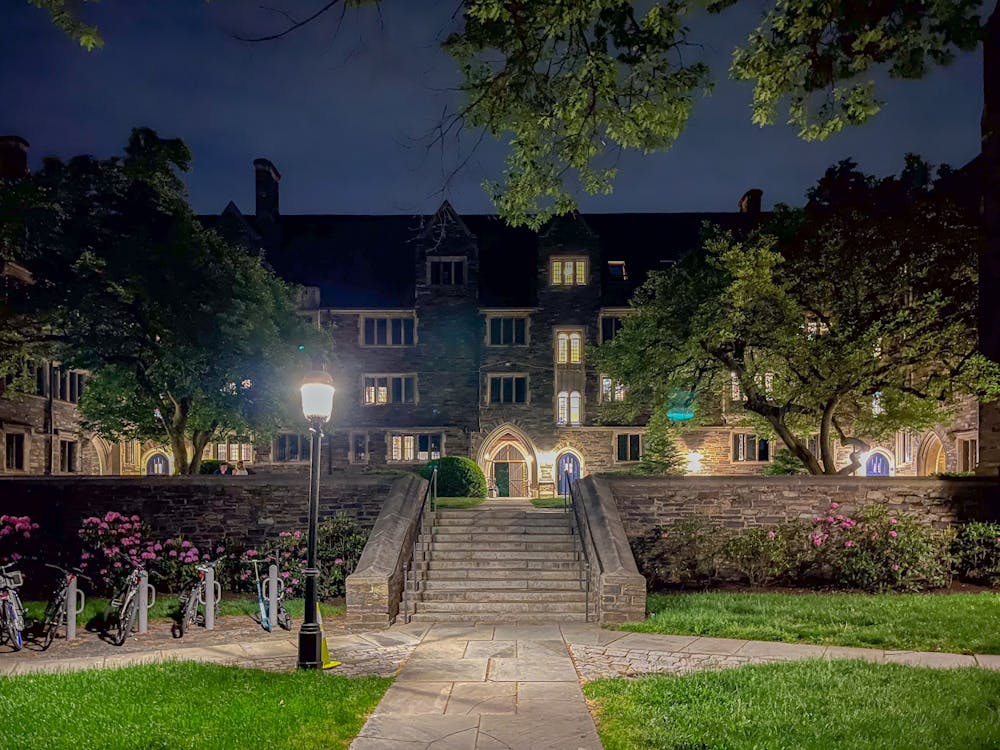On April 20, 1969, Princeton’s Board of Trustees announced the first phase of the University’s coeducation: women would be allowed to enroll at the University as undergraduates for the first time in the fall. That spring, Princeton began to matriculate 102 female first-year students and 48 female transfer students — though they planned to admit 90 first-years and 40 transfers — for the upcoming academic year. It was a fast turnaround recruitment process, and, according to statements by the admissions staff, focused on a few schools. The Daily Princetonian looked at the geographic distribution of the class to shed light on that extraordinary year in admissions.
In an interview with the ‘Prince,’ former Dean of the college Nancy Malkiel, who wrote a book on the history of coeducation at Princeton, said “Princeton, in a very process-oriented way, would never in the abstract have made a major decision in late April to be implemented in September without more time to plan carefully.”
“They had to do that, because Yale had decided to admit women in the fall of 1969, and they weren’t going to let Yale get out ahead of Princeton,” Malkiel continued.
It was only months between the Board’s vote in favor of coeducation and the Class of 1973’s matriculation.
As described in a Princeton Alumni Weekly (PAW) in 1969, due to the trustee decision still pending, the Admissions Committee did not specifically recruit female students that year. Admissions officers would normally visit secondary schools to recruit prospective students, and University alumni would normally be instructed to search for promising high schoolers, but for the Class of 1973, neither cohort recruited female applicants. Because of that, the University had “far less diversification in the female applicants than in the male applicants,” noted John Osander ’57, then-Admission Director, in an interview with PAW in 1969.
Osander passed away earlier this year.
Osander discussed some of the effects of the speedy timeline: “Most of the girls are from what are considered ‘good’ schools; most are from the East; most are at least well-to-do. We had many excellent applications from 52 alumni daughters (22 were accepted), an unusually high percentage of the total. It was apparent that many of the girls were applying because of their particular circumstances: either they were bright young women who heard of Princeton through their school, or they were alumni daughters kept informed by their fathers’ strong interests, or both,” he told PAW.
The one caveat was that the Admissions Office was aware that applicants from minority and disadvantaged backgrounds would be less likely to know about the University’s shift to co-education. In light of this, then-admissions officer Spencer Reynolds ’61 told PAW that he made a specific effort to recruit applications from Black and underprivileged backgrounds, successfully receiving applications from 23 of them, 10 of whom were admitted.

Osander went on to state that he felt “that the quality of accepted women is exceptionally high” for the Class of 1973.
In 1969, female students made up roughly 15 percent of the incoming class. A PAW article, published in May 1969, stated that when the policy was set out, the University aimed for an eventual 3:1 ratio of men to women. In 2022, the ratio of male to female undergraduates was roughly 1:1, with 48 percent of undergraduates identifying as male and 48 percent identifying as female.
Contemporary data shows that there was at least some geographic skew among the women of the Class of 1973. Eighty-three women graduated as a part of the Class of 1973, the first graduating class of women in Princeton’s history admitted as first-years. Those women matriculated with 19 other women in 1969; several women either completed their graduation requirements early and graduated within three years or took gap years. Only five women left Princeton or transferred out.
The women of the Class of 1973 primarily came from New Jersey, New York, and Pennsylvania. Of the 101 women who were listed in the 1969 Freshman Herald (out of 102 who matriculated), 23 came from New Jersey, 32 came from New York, and 11 came from Pennsylvania. No students came from Delaware, meaning that 65 percent of the women who matriculated that year came from New Jersey or a state bordering it. In contrast, 48 percent of the incoming class as a whole came from New Jersey or its neighboring states.

In New Jersey, New York, Connecticut, Indiana, and Washington State, the percentage of female students from the state was higher than the broader Class of 1973 percentage of female students.
Twenty-two states sent men and no women to matriculate at Princeton that year, while 11 states sent nobody — a total of 33 states that sent no women to Princeton. Overall, 37 states and the District of Columbia saw at least one Princeton matriculation, while only 16 and the District of Columbia had a female resident matriculate.
The Class of 1974 saw a more even geographical distribution, particularly amongst women. Nine more states, for a total of 26, had a woman matriculate at Princeton in 1970. Forty-one states sent students to Princeton in total, four more than the previous year. Three female international students, from Canada, England, and France, matriculated at Princeton that year, as compared to only one, from Spain, who matriculated the year prior. Additionally, the proportion of women hailing from New Jersey or bordering states dropped to 50 percent, only slightly higher than the 48 percent of the entire class that came from those states.
Charlie Roth is a head Data editor for the ‘Prince.’
Suthi Navaratnam-Tomayko is an assistant Data editor for the ‘Prince.’
Please send corrections to corrections[at]dailyprincetonian.com.








